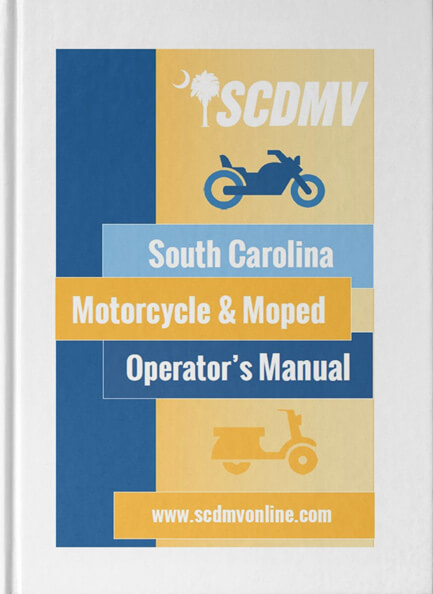South Carolina Motorcycle Manual Driver's Manual
To make studying easier, the South Carolina DMV handbook 2026 edition is available in multiple languages and comes with an audio version. Get interactive support with our AI assistant to clarify any complex terms.
South Carolina Motorcycle Manual 2026
Motorcycling in South Carolina can be an enjoyable leisure activity.
However, along with the freedom and convenience of getting on a bike, there are some serious risks and hazards. It’s important to be familiar with your motorcycle, as well as the rules and regulations of the road before setting out.
Unlike many other states, South Carolina does not offer a separate Motorcycle Manual for prospective riders. However, some important motorcycling information may be found in Chapter Five of the state Driver License Manual available below. This document is also available for free in English and Spanish at any South Carolina Department of Motor Vehicles office.
The Class M
The Class M (motorcycle) license applies for two-wheeled motorcycles only. There is a different license available for three-wheeled motorcycles, and motorcycles with side cars. Class M permit applicants are required to be at least 15 years old. Applicants must take a knowledge test at a South Carolina DMV office. The knowledge test is made up of multiple-choice questions based on the material in the Driver License Manual. Once you successfully complete the test, you will be issued a learner’s permit. After you’ve had the permit for a minimum of 180 days, you may take the on-cycle skills test, the final step to obtain the Class M license.
The Manual
As the Driver License Manual is the basis for the knowledge test, it’s especially important for you to know this information inside out. Chapter Five, which focuses on motorcycles, should be your focus. Chapter Five includes information on:
1. Getting familiar with your motorcycle:
- Vehicle controls (where they are and how to use them);
- Accelerating;
- Shifting gears;
- Braking;
- Steering;
- Maneuvering across railroad tracks and other hazards.
2. Preparing to ride:
- Protective clothing (footwear, helmet, eye protection, etc.).
3. Selecting the proper motorcycle for you.
4. Defensive driving attitudes.
5. Motorcycle safety:
- Precautions;
- Avoiding accidents;
- Tips for maintaining control on the road.
6. Seeing other vehicles and being seen by other drivers:
- Scanning;
- Checking blind spots;
- Head checks;
- Body position (seat, hands knees, feet);
- Rearview mirror;
- Positioning your vehicle in a lane;
- Using headlights properly.
7. Avoiding hazards:
- Road conditions;
- Traffic conditions;
- Escape routes;
- Blind intersections;
- Curves;
- Roadside;
- Left-turning vehicles;
- Stop signs and other intersections;
- Dangerous surfaces (uneven roads, slippery surfaces, obstacles on the road).
8. Riding with a group:
- Staggered formation;
- Night riding;
- Passing other vehicles.
9. Carrying passengers and cargo.
As you can see, there is plenty of information available for your review in this one chapter alone. You’ll certainly find it worthwhile! Good luck on the test!
